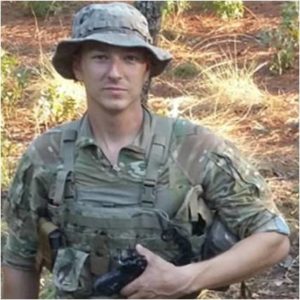Make it Simple
The 3-day survival pack doesn’t have to be as complicated as most people make it. Modern technology and today’s comfort has many duped into bringing everything but the kitchen sink. This line of thinking is dangerous. Being overburdened with too much gear can not only cause injuries from carrying so much weight, but it can also prevent you from moving quickly when needed.
The 3-day “assault pack” was thought up by the military Special Ops, and later implemented by other combat soldiers. It was meant to reduce the amount of items you could carry, thus trimming the excess weight. This allowed the soldiers to move faster for longer distances, and still carry the bare essentials. This article is all about reducing weight and packing appropriately.
Personal Advice
The 3-day survival pack shown in the video is my personal pack I keep around the house. I use it when I go out with the Boy Scouts or just camping with the family. I do add a winter sleeping bag if camping during the winter. The Assault pack that I carry at work is exactly the same, it’s just made of items issued to me and the colors, therefore, are different. For example, it has an ACU poncho liner instead of BDU woodland, Multicam Poncho instead of BDU, etc. The setup, however, remains the same. Below the intro video I’ve listed each item I carry my pack and why.
What to Put in your 3-day Survival Pack
Poncho– I carry a BDU poncho in my personal and a multi-cam in my issued. The multi-cams are very expensive and hard to find. The BDU’s are easier to find, cheaper, and just as durable. Poncho’s are the most versatile piece of gear you can own. It can be used to drag a wounded/ dead team-mate, to make a hooch, keep you dry, or as a sleeping bag. I have even used one in the desert to give me shade from the sun. Basically, it’s almost as important as your ammo is.
Poncho Liner-Mine is also BDU woodland. Believe this or not, the army actually doesn’t issue poncho liners to soldiers. Not sure why, maybe because it would make too much sense. Either way, every good operator I know has one if not two. They are great for keeping you warm in the field and also can be used to drag team-mates, provide shade from the sun, and camouflage your location.
Tip: If you read the instructions sewed onto the liner it will tell you that you can tie the liner to the poncho and button up the poncho, thus making a sleeping bag for the field. The idea is that instead of packing a sleeping bag you’ve already got one. They claim that it will protect you down to around 30 degrees. That’s what most sleeping bags will do. Add in the fact that you can throw on more clothes and bingo. Keep that extra room in your pack where the sleeping bag would have gone and use it for clothes or other items that will make your stay in the field better.
Water– You can only live about 3 days without water, thus make sure you got enough to last. Every survival kit we sell will have a life straw in it. However, you need to still carry as much water as you can. A camelback is a perfect way to do just that. You can simply suck water out of a straw as you walk. It’s also helpful for in the OP/LP because it limits movement.
Tip: I like to have a back-up (my trusted canteen and canteen cup). The stainless steel cup can be used to boil water to purify it and to cook meals out of. The canteen is thick and tuff enough that laying on it, throwing it, dropping it, or pouring boiling hot water into it will not damage the canteen. So you can purify water by boiling and pour it into the canteen, throw it into a nearby stream to cool it off, and not worry about damage to the canteen or bad water leaking into the canteen. You can even empty one out and use it like a buoy. After all, they are water-proof.
Food– I keep 6 meals of fish in my pack, 3-Salmon and 3-Tuna. They’re cheap, pack easy, and high in protein. This is enough that I can eat well and have the energy to keep moving. It also helps that the food packs are light-weight and flat. This means they don’t take up much room in my pack. I also keep a set of utensils. I don’t want to be putting food in my mouth with dirty hands.
Rope-I like to keep 100’ of rope on my pack. It helps when going down steep inclines and crossing rivers. Just something I’d rather have and not need than need and not have.
Machete– I like the Kershaw blade. It came razor sharp and has held that edge a long time. I’ve taken down small trees with a single strike. It helps a lot with building hooches, firewood, or even self-defence. That’s probably the only reason I prefer it over a hatchet. I feel that I can better protect myself with a big butt machete that a small woods hatchet. Either way, it’s a great tool and cost me only about 50 bucks.
E-Tool– Also a very versatile piece of equipment. It’s great for digging holes, filling sandbags, taking out small brush and cutting small dried firewood. You can even use it as a weapon if you have to. However, don’t try anything too big with it. As with many things out there, it was made by the lowest bidder.
Binos– If you don’t have binoculars on your person than keeping a small set in your pack can be very helpful. No matter if you’re just hiking through an area or on a mission. Being able to see in the distance is very beneficial. They can also be used to signal aircrafts or other people by reflecting the sunlight of the lens.
Red Lens Light– A red lens light will help you see at night without giving away your position from so far off. It is duller than a plain white light but it can still be seen at the right distances. So just be careful in how you use it. If you’re not in a tactical situation you will find it most necessary when the lights go out. But like most electronics, it will eat batteries and fail you when you most need it. Keep an extra set of batteries for every electronic device you carry in your pack.
Misc– Bug spray, Camo Face paint(I prefer the kind in a tube), a Therma cell(see tips for the trade), Hygiene kit(not necessary if this is a bug out pack), Sniper veil (helps hide your face, keep mosquitoes off, and keep you warm), Gloves, Aspirin, Benadryl, Baby Wipes, and a extra pair of WOOL Socks. All of these are great items to include in your pack.
Tip: The socks, however, are probably going to be the most used. You are going to want to keep your feet dry and warm. Take care of them and they will take care of you, neglect them and you’ll be in trouble. Wool has an added advantage, it will keep you warm even when it’s wet. This is why the military still issues wool socks and sweaters. Baby wipes work better than toilet paper as it doesn’t stick to you when you’re sweating. They can also be used to take a “field bath” with.
Test your Pack
All of these items will help you if you’re going to be out for a while. But just because I carry this doesn’t mean its right for you. Try this list out and figure out what does and doesn’t work for you. Here at Tackleberry Solutions were working to get most of the gear listed in this article. The idea we have is to help you build your 3-day survival pack. And if you had rather have us build it for you we can accommodate with that as well. Either way, if we can help please email us or call at (919) 223-7741.

[page_section pattern=’https://tackleberrysolutions.com/wp-content/themes/luxe/images/patterns/dark_wood.png’ textstyle=’light’ position=’top’]
[two_third_first]
Self-Defense Weapons Training
Get started with our Free Download.
Improve your shooting skills with a pistol.
[thrive_optin color=”blue” text=”Download Now” optin=”1231″ size=”medium” layout=”horizontal”][/two_third_first][one_third_last]

[/one_third_last]
[/page_section]


